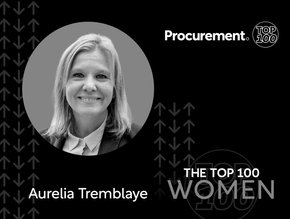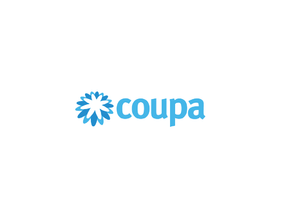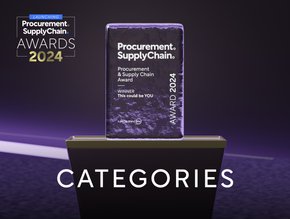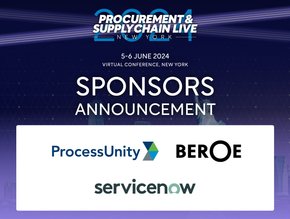Procurement Request for Supplier Collaboration & Innovation

You probably already know that procurement is a tough gig. In an ideal business world, wouldn’t it be great if a procurement professional could just focus on finding the best bargains on the market for the products and services that they purchase before handing over the reins to another department? Yes, I reckon so. Procurement aficionados probably do too. Perhaps, once upon a time, that was the status quo; nowadays, though, there are limits to the value that somebody can generate by focusing solely on the final price on their shopping list.
These days, companies that feature advanced procurement functions know that they need to spice it up if they want to stay on top of the competition. These organisations know that if the company chooses to collaborate and cooperate with its suppliers, both parties can usually come out of the exchange with lucrative new sources of value.
It makes sense, doesn’t it? Suppose a company’s customer base is calling out for a specific product, but it cannot provide exactly what they need. There’s scope for direct collaboration between buyers and suppliers to innovate the solution─profit for both the company and supplier and a happy consumer who will return for future business.
In fact, buyers and suppliers can further this collaborative effort into a myriad of business factors; together, they can redesign and optimise their supply chain practices to ensure ESG compliance and reduce waste whilst increasing efficiency, or they can split the cost of new materials and resources, lessening the burden on each party. Both parties can even work together on forecasting for the coming quarters, planning, and long-term capacity management. By working together, companies open up a new style of complete transparency between buyers and suppliers, optimising service levels, mitigating potential risks, and creating a more agile but simultaneously robust supply chain operation.
This seems like common-sense. I know. So it probably begs the question, ‘Why are you talking about it?’ Well, while it seems like an easy, incredibly profitable solution, the benefits of supply collaboration mostly remain locked behind a barrier. Companies the world over have excellent case studies on individual cases of successful collaboration with their suppliers, but that’s where the success tends to stop.
It turns out that it’s much harder to jointly integrate buyer and supplier approaches across the entire procurement and supply chain cycle. The value chain is big and broad, after all.
The Barriers to Collaboration
Fortunately, James Marland, Global Vice President, SAP Intelligent Spend & Business Network, sat down with Procurement Magazine to share his thoughts on the barriers to successful buyer and supplier collaboration. And in his opinion, “there are two main barriers to collaboration, trust and technology.”
“Let’s take technology first. In order to collaborate effectively, you need to treat suppliers as part of your organisation. I call this going from the world of ERP to NRP. From Enterprise Resource Planning to Networked Resource Planning. When MRP first morphed into ERP in the mid-1990s, Enterprise was aspirational; for the first time, your production lines could connect to your sales forecast and your finances. But now, in 2021, “Enterprise” is too limiting. If your span of control is limited to only your enterprise, then you will miss all of the signals from your suppliers and customers, signals about changing markets, buying behaviour and raw materials prices. It’s a big change: thinking not just being able to collaborate across the enterprise, but about collaboration across a complete value chain. How to do this? A true business network.”
“But technology only takes you so far. People only share with people they trust. And trust is built up between partners over a series of confidence-building measures. If my customers always pay me late or put me on a 90-day payment term when they know I am a self-financed start-up, then how likely am I to want to share my crown jewels. Likewise, if my suppliers don’t respect my IP and share my plans with potential competitors, how likely is it that I will want them co-designing the next version of my product. Relationships often deteriorate not due to sneaky or malicious acts, but just through miscommunication: in B2B, you have hundreds of suppliers, and they have hundreds of customers, and the optimal way to measure this sentiment is with a tool like Qualtrics, which checks the pulse of suppliers in an unobtrusive way, to find out problems that might damage the relationship so you can sort them out before they blow up.”
I’m sure you’ve heard the old chestnut:
Two hikers are walking through the forest when a great big bear suddenly appears on the path about 10 metres in front of them. The bear sees them and starts to head towards them. The first one drops his rucksack, pulls out a pair of trainers, and frantically begins to put them on. The second one says, “What are you doing? Trainers won’t help you outrun that bear.” “I don’t need to outrun the bear,” the first one says. “I just need to outrun you.”
“The same is true for supplier collaboration. You don’t have to have the perfect relationship to reap crucial innovations from the supplier, just a slightly better relationship than their other customers.”
Requesting for I P O
No, not an initial public offering. You’re more likely to find mentions of those in our sister publication, FinTech Magazine.
What I’m talking about is the well-known ─ in the procurement and sourcing world, at least ─ RFx (Request for): RFI, RFP, and RFO.
Marland recently told the world, via his personal channels, that innovative companies are looking at issuing:
- Request for Innovation
- Request for Partnership
- Request for Outcome
“In essence, companies are now asking suppliers to ‘Solve [this] problem for [us].”
That idea, in itself, is innovative. Have the suppliers innovate new solutions to old problems to demonstrate their capabilities and earn a companies investment and partnership. To help solidify the value of supplier innovation, I thought I’d take a look at a few excellent examples ─ the first provided by James Marland ─ of this, played out in the real world, to see if it worked out.
Without further ado:
Examples of Supplier Innovation
The Coke Bottle
“In about 1915, Coca Cola needed to redesign their bottle. The standard straight-sided bottle wasn’t distinctive enough. It was becoming easily confused with ‘copycat’ brands. Coca‑Cola ran a contest: Glass manufacturers were approached to come up with a unique bottle design.
The Root Glass Company of Terre Haute, Indiana, designed the famous contour shape.
If this supplier had been unhappy, maybe this innovation would have gone to a competitor instead. 100 Billion bottles later, it’s still a good design. And coke only got it because they had got innovation from a supplier.”
Ford’s Window Trim Competition
When Ford, the automobile behemoth, launched a project to reduce their vehicle window trims’ production cost, executives decided to turn to the suppliers for innovative new solutions. It turned out to be an ingenious move. Ford’s suppliers created a whole new resin that streamlined the manufacturing process and took 19,200 miles off the companies logistical trucking, resulting in a cut of 2,700 gallons of diesel and 60,000 pounds of carbon dioxide.
This innovation saved the company money and positively affected the environment─a plus for the wallet and the global sustainability drive.
Walmart’s ‘Get on the Shelf’
Ever heard of Walmart’s ‘Get on the Shelf’ competition? It went viral almost a decade ago and offers inventors an opportunity to both get noticed and potentially sell their products on Walmart’s website and in selected stores. All the entrants had to do was submit a video of their product for a panel of judges at the corporate end, and the winner would reap the rewards.
As Alex Short, Founder of Old St Labs, states: “Get on the Shelf is a shining example of how supplier innovation can be mutually beneficial for the supplier and the buyer: Walmart are able to tap into new ideas and processes from their supply base, while the supplier can road-test their ideas in a secure environment, with the potential for great success.”
To conclude, we’re going to give you a quote that James often refers back to, by Visna Wightman, a former CPO of Woolworths: “There’s no such thing as an internal customer.” And a final insight from the man himself:
“The customer sits at the heart of every decision that we make. We in procurement get to work on initiatives that impact the customer, the customer who pushed the trolley, the customer who is in our store. Not an internal customer.’ So rather than satisfying our internal customer in engineering, marketing, and finance, we need to draw back and look at the one who actually pays the bills. The customers should be our customer in procurement.”





